
This is what remains of a 1900-year-old Roman noble’s house
Yesterday we visited the Musée Gallo-Romain in Perigueux. This is the main indoor display area as seen from the upper level gallery. The city was named Vesunna at that time, although late in the empire its name was changed into what has morphed into “Perigueux” (try Para Goo to get close). Whoever built the place was very rich. The under-floor heating was handled by slaves. (No political comments, please.) Here is a picture of the kitchen:

If you read French, the sign has a lot more information.
Of course, next to the kitchen is a small dining room:

The murals are original.
Those aren’t the only painted walls on the house:
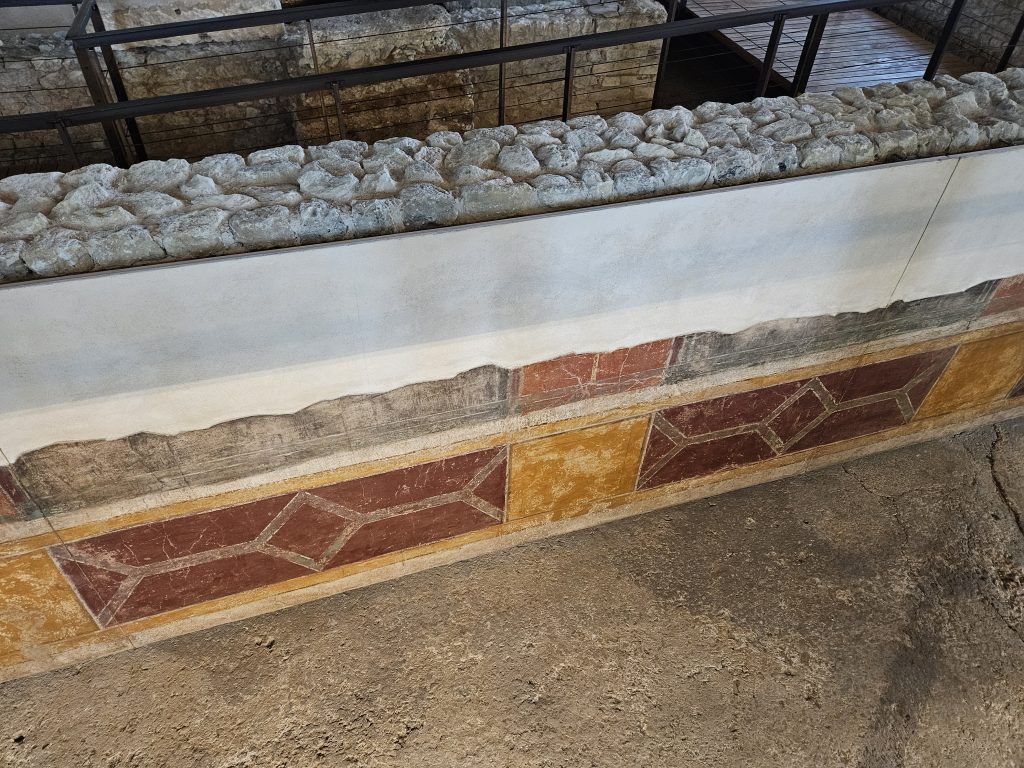
That’s 1900-year-old paint. We should all look so good at that age, huh?
Comfort was provided by under-floor heating, which involved pots of fire beneath the floor. These pots could be moved around (by slaves, of course) if the family and guests moved to a different room. The slave owner had an excellent insurance policy. If somebody murdered the master of the house, all the slaves were killed, which provided the master with a sort of personal Pretorian Guard. I didn’t get a picture of a heating space, but if you visit, you’ll see several.
There are things outside in a courtyard, including a 2000-year-old tower that was incorporated into the town wall in the fourth century. (Prior to that there was no need for a town wall. No wonder people looked back on Rome with a sigh, I guess.) But a truly impressive storm came up and it would have been difficult to see what we were looking at due to wind and rain. But, I did get a few more photos, to wit:
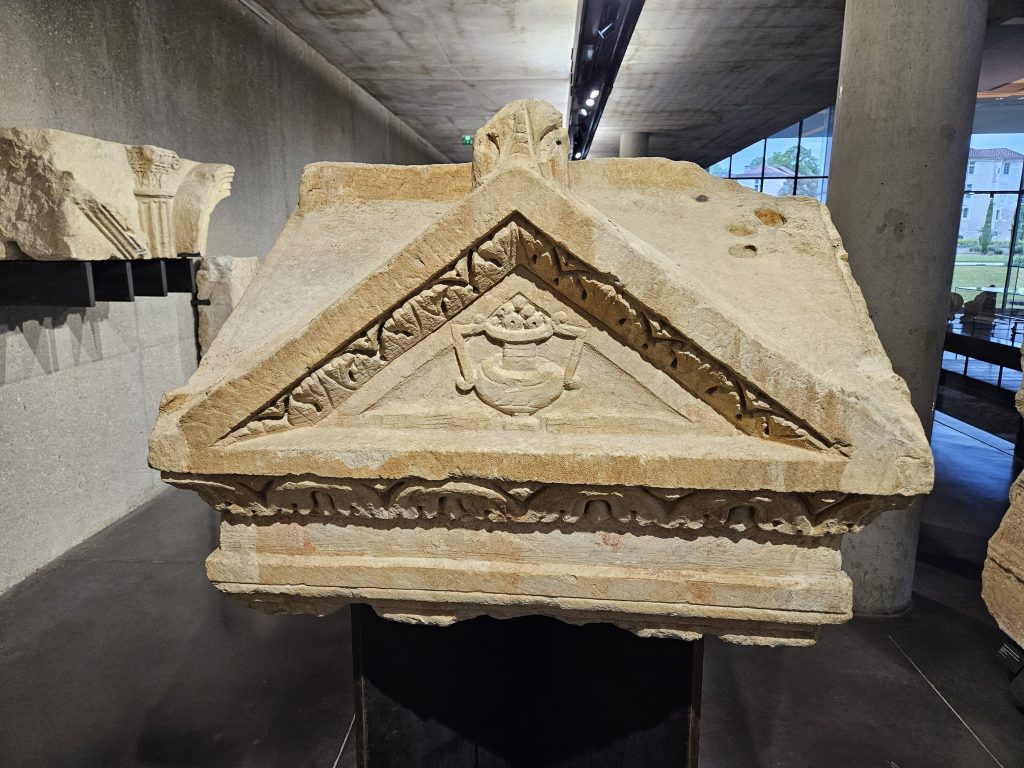
A capital from a column with, I dunno, an amphora full of biscuits? Rocks? Whatever, carved into it.
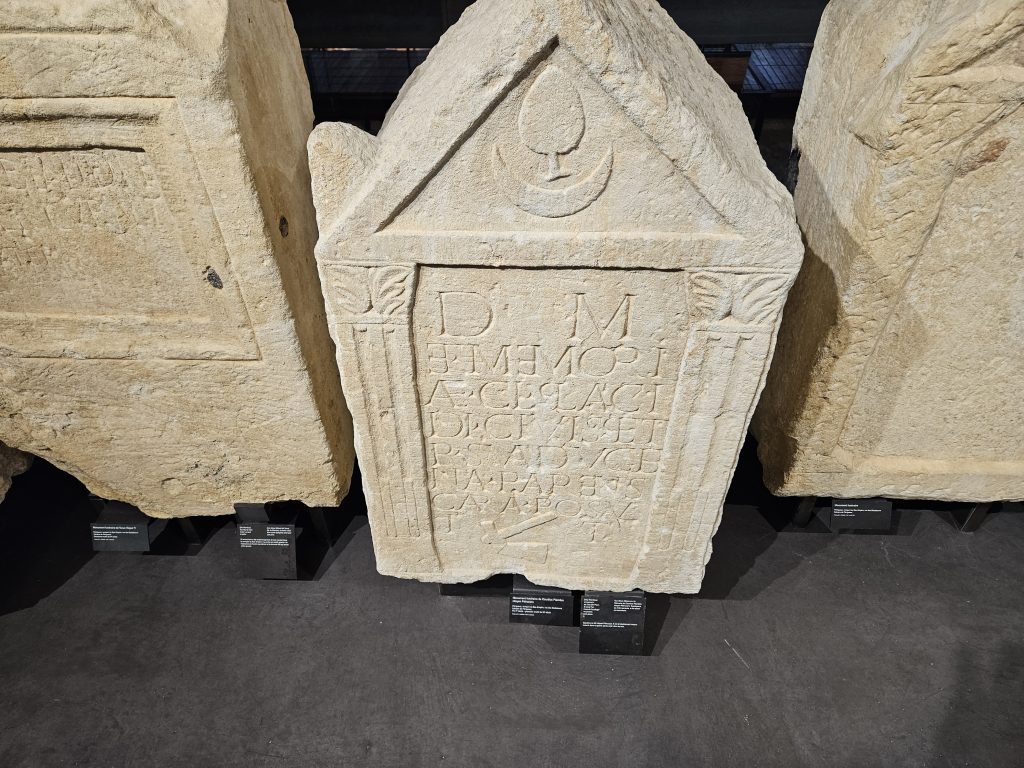
An inscribed bit of stone, but from what I couldn’t say. I can read a 21st century vulgate version of Latin, but not the original. I think there’s a translation on one of the small labels.
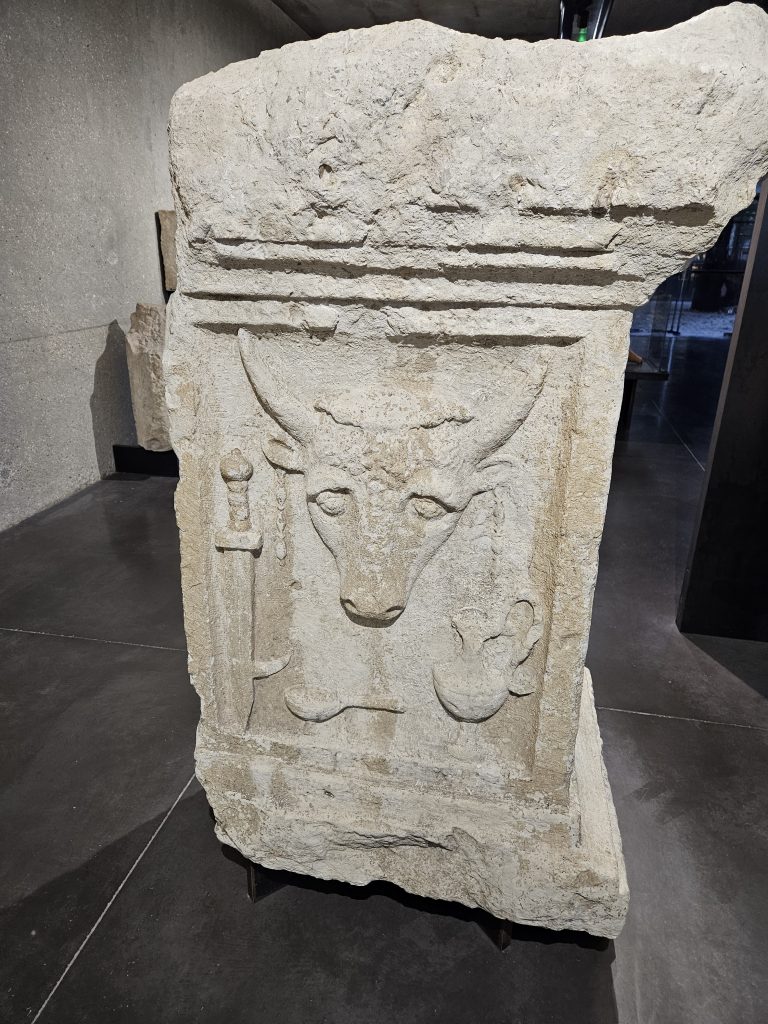
A part of a column. I’d say “NO BULL!” but, well, you know . . .
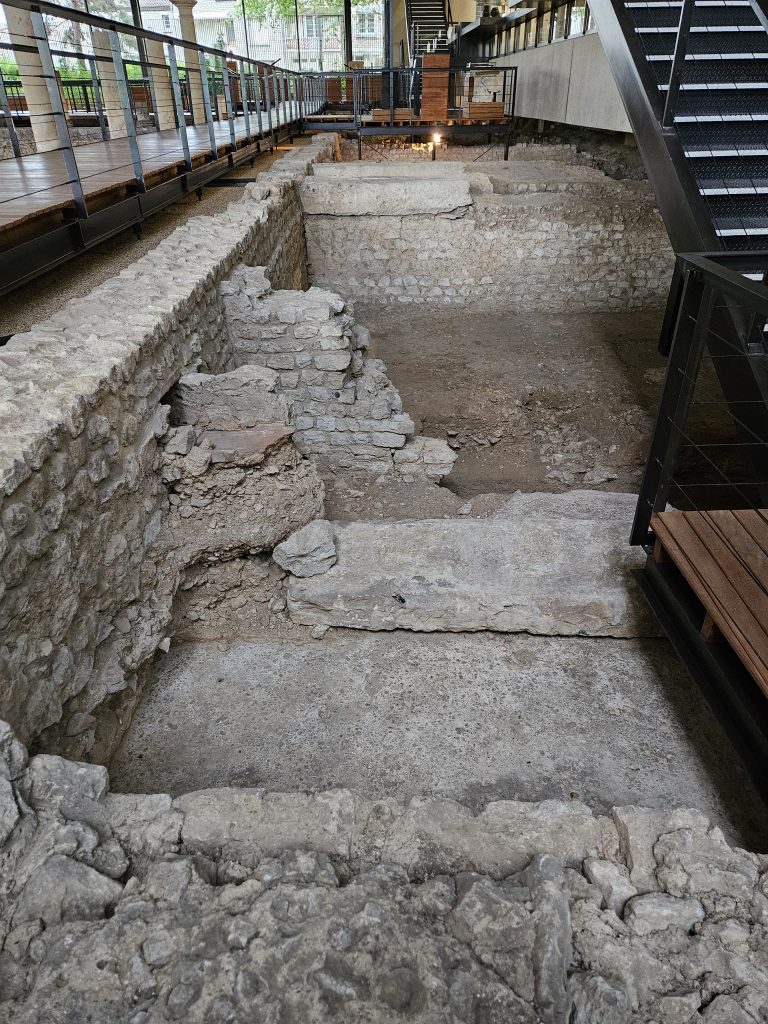
A row of back rooms of the house. Could be bedrooms, storerooms, slave quarters, nobody knows, really. Originally the house fronted the river (Dordogne) but after numerous modifications, and especially after the city wall was built, that access was cut off. In fact, sometime in the third century somebody filled in the courtyard and raised the floor. Like all good things, this place deteriorated in the end, and was under a mess of landfill until rediscovered by canal diggers in, I think it was, 1859? Sometime around there.
A really interesting aspect of this old town and house is that the owners, and their slaves, probably still have descendants living in the area. Unlike the US, where the only ancient town I’ve been to is a village in Arizona, in Hopi, that’s even a bit older than Vessuna. That is, I’m actually related to the indigenous people of France, kind of distantly, but more closely than I am to any Native Americans. My grandfather was born in a village in Moselle, a long way from Perigueux, but still in France. And, in fact, most of the inhabitants of Vessuna were local Celts, not imports from Rome. A bit odd to contemplate for an American, but there it is.*
And that was our first brief vacation together in France. Must pick another area to explore. Hmmmm . . . .
Visit: https://www.perigueux-vesunna.fr/
*The French are mostly still shorter, like Celts, even though their country has a Germanic name.